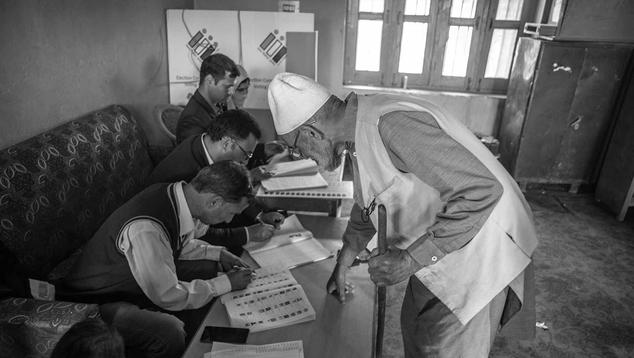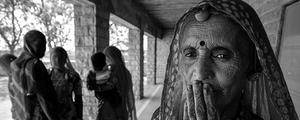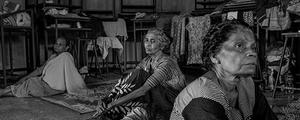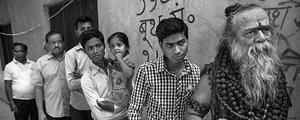Story Highlights
- More Indians felt safe in 2018 than in Modi's first year in office
- Women in India continue to trail men in perceptions of safety
- Confidence in military and local police has increased during Modi's tenure
WASHINGTON, D.C. -- Perceptions of safety in India remain relatively high ahead of what some are calling the country's "national security election." Nearly seven in 10 Indians (69%) say they feel safe walking alone at night in the city or area where they live, up 17 percentage points from Prime Minister Narendra Modi's first year in office in 2014.
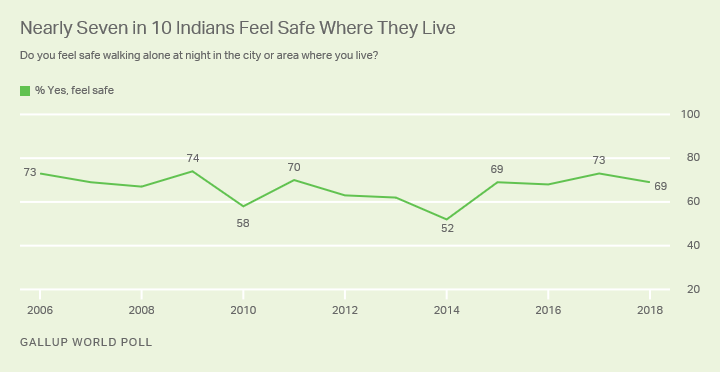
Findings from a Gallup World Poll survey conducted in India in October-December 2018 underscore that perceptions of safety remain relatively high despite continuing safety concerns in the nation. According to the most recent government statistics, published in 2016, the crime rate increased slightly during the first few years of Modi's tenure, with an increase of kidnappings and abduction despite a decline in murders. Additionally, there were nearly 1,000 terrorist attacks in the country in 2017, third most in the world behind Iraq and Afghanistan.
Urban (72%) and rural Indians (69%) have similar perceptions of safety. The biggest differences are regional: 78% of residents in East India and 75% in South India feel safe walking alone at night, versus 60% of those in North India. North India includes Delhi, the second-largest urban area in the world and the city with the highest crime rate in India, according to the most recent government statistics. Delhi also has the highest rate of crime against women in the country.
| Yes | No | ||||||||||||||||||||||||||||||||||||||||||||||||||||||||||||||||||||||||||||||||||||||||||||||||||
|---|---|---|---|---|---|---|---|---|---|---|---|---|---|---|---|---|---|---|---|---|---|---|---|---|---|---|---|---|---|---|---|---|---|---|---|---|---|---|---|---|---|---|---|---|---|---|---|---|---|---|---|---|---|---|---|---|---|---|---|---|---|---|---|---|---|---|---|---|---|---|---|---|---|---|---|---|---|---|---|---|---|---|---|---|---|---|---|---|---|---|---|---|---|---|---|---|---|---|---|
| % | % | ||||||||||||||||||||||||||||||||||||||||||||||||||||||||||||||||||||||||||||||||||||||||||||||||||
| Central | 64 | 36 | |||||||||||||||||||||||||||||||||||||||||||||||||||||||||||||||||||||||||||||||||||||||||||||||||
| East | 78 | 21 | |||||||||||||||||||||||||||||||||||||||||||||||||||||||||||||||||||||||||||||||||||||||||||||||||
| West | 69 | 30 | |||||||||||||||||||||||||||||||||||||||||||||||||||||||||||||||||||||||||||||||||||||||||||||||||
| North | 60 | 39 | |||||||||||||||||||||||||||||||||||||||||||||||||||||||||||||||||||||||||||||||||||||||||||||||||
| South | 75 | 21 | |||||||||||||||||||||||||||||||||||||||||||||||||||||||||||||||||||||||||||||||||||||||||||||||||
| Gallup World Poll | |||||||||||||||||||||||||||||||||||||||||||||||||||||||||||||||||||||||||||||||||||||||||||||||||||
Gender Gap Remains in Perceptions of Safety
Despite recent increases in Indians' perceptions of safety, fewer women (65%) than men (73%) report feeling safe walking alone at night. This gap is not unusual, because even countries rated highest in gender equality, such as Norway, Finland and Rwanda, see lower percentages of women than men saying they feel safe walking alone at night.

Some experts have rated India as one of the world's most dangerous countries for women, but there are signs that Indian women today feel safer than during Modi's first year in office: 49% reported feeling safe in 2014, versus 65% of women in 2018.
Under Modi, the government has implemented a "Beti Bachao, Beti Padhao" (save daughters, educate daughters) program to protect Indian girls, and his party has also pushed for stricter punishments for sexual violence. Yet the most recent government statistics suggest that the levels of most categories of crime against women remain high, even if subjective evaluations have improved.
Currently, Indian women in urban areas (75%) are more likely to feel safe than women in rural areas (64%). Some have documented that sexual violence is less likely to be reported and prosecuted in rural areas, which may contribute to this lower perception of safety among women in rural India.
Increasing Confidence in Security Sector Under Modi
Indians also have more confidence in the security sector than when Modi first took office. Indians in 2018 expressed nearly universal confidence in their military (94%), which is the second-highest of any country in South Asia.
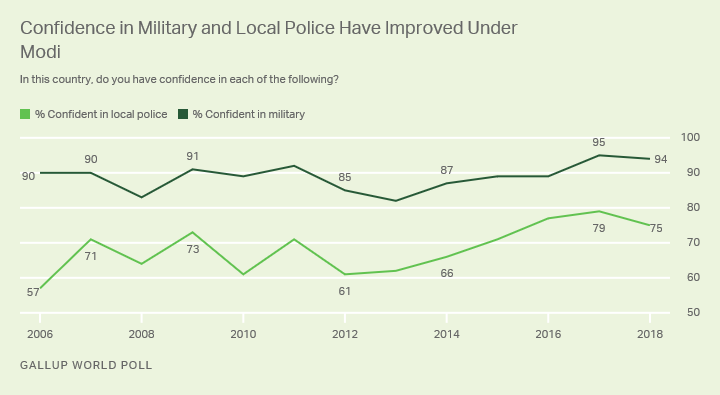
While the national military has consistently had highly positive evaluations from Indians, local police have not historically been viewed as favorably. In 2014, 66% of Indians expressed confidence in their local police. This, however, increased to three-fourths of Indians expressing confidence in their local police in 2018.
Modi has emphasized police reforms during his time in office, including funds for modernizing local police forces and improving training. Yet some have speculated that the momentum of these reforms has slowed, and some Indians have been critical of how the police have handled riots in parts of the country, which may have contributed to the decline in confidence since its peak in 2017.
Bottom Line
National security and safety issues have become a central issue in India's current election. Modi has used India's military actions in his election appeals, while also evoking the Easter Sunday bombings in neighboring Sri Lanka to rally voters around national security. This strategy may prove effective, given Indians' positive assessments of their personal safety and confidence in key institutions. While perceptions of safety and confidence in local police have dipped slightly since 2017, Indians as a whole have improved perceptions of security since Modi and his party won in 2014.
Despite these improvements, there is room for progress in some regions of the country, as well as with improving safety conditions for women. While a majority of women feel safe walking alone in the area where they live, many women in rural areas in particular still lack a basic feeling of security.
For complete methodology and specific survey dates, please review Gallup's Country Data Set details.
Learn more about how the Gallup World Poll works.
